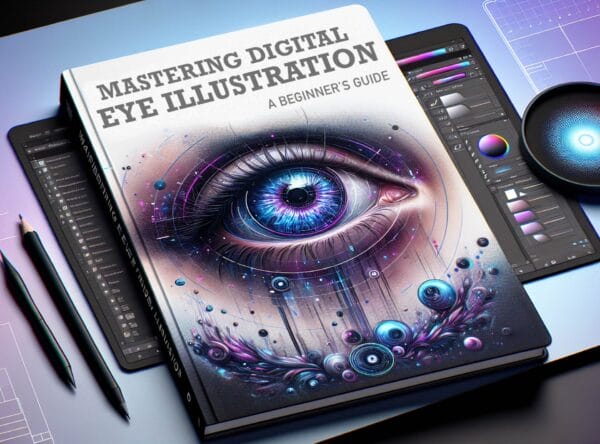Whether you’re a budding artist or an experienced digital painter, understanding the intricacies of rendering lifelike eyes can add a captivating depth to your characters and portraits. In this article, we will explore tips and techniques to help you achieve realistic and expressive eyes in your digital artwork.
Introduction to Digital Eye Illustration
As the windows to the soul, eyes are one of the most expressive elements of the human face. Mastering the art of digital eye illustration can be a daunting yet rewarding challenge.
Understanding Eye Anatomy
Before diving into the actual illustration process, it’s critical to have a solid grasp of eye anatomy. Knowing the structure of the eye—including the iris, pupil, sclera, and eyelids—will serve as a foundation for your illustration work.
- Iris: The colored part of the eye that controls light levels inside the eye similar to a shutter.
- Pupil: The dark center in the iris that changes size to regulate the amount of light entering.
- Sclera: The white part of the eye, a tough covering that provides protection.
- Eyelids: The flaps of skin that cover and protect the eye when closed.
Study images of eyes and observe the differences in shapes, sizes, and colors. Notice the subtle variations that make each eye unique.
Choosing the Right Software and Tools
The next step is to select the appropriate digital painting software and tools. Popular choices among digital artists include Adobe Photoshop, Procreate, and Clip Studio Paint. Consider the brush options, layer capabilities, and blending modes each program offers to create textured and realistic eye illustrations.
A graphics tablet can significantly enhance your control and precision compared to using a mouse. Pressure sensitivity allows for more organic strokes, essential for mimicking natural variations in line weight and color blending.
Sketching the Basic Shape
Start your digital illustration with a rough sketch. Create a new layer and begin by drawing the general shape of the eye. The oval of the eye should be slightly tilted, with the inner corner lower than the outer corner to reflect a natural perspective.
Remember to sketch the surrounding facial features lightly to ensure that the eye aligns correctly with the rest of the face. This will help maintain proportion and realism in your illustration.
Adding Details and Textures
Once the basic shape is in place, start refining your lines and adding details such as the iris and pupil. The iris is especially crucial for conveying the eye’s mood and expression, so pay attention to its patterns and textures.
To achieve the depth and richness of a real eye, use various brushes to simulate textures. Don’t overlook the highlights and shadows—they are key to making the eye look glossy and full of life. Remember that the white of the eye, or sclera, is not entirely white; subtle shadows and blood vessels contribute to its realistic appearance.
Coloring Techniques
Coloring is where your illustration can truly come to life. Start by filling in the base colors, then build up the layers with different shades and hues. Use semi-transparent layers to add glazes of color to the iris, building up its complexity.
Lights and darks will control the eye’s form; the iris typically has a darker ring around the edge, while the pupil must be the darkest part of the eye to appear deep and hollow. Don’t forget to add the reflective highlight on the cornea, as it suggests moisture and vitality.
Final Touches
For the final touches, zoom in to add the finest details, like tiny lines in the iris and delicate reflections in the pupil. Use a fine brush to paint the eyelashes, remembering they’re not perfectly uniform and change in length and direction.
Consider revising the overall balance of your illustration by tweaking the contrast, saturation, and sharpness. Once your digital eye illustration looks balanced and realistic, it’s time to sign your work and prepare it for presentation.
Conclusion
Digital eye illustration can be a complex process, but with practice, patience, and an understanding of eye anatomy and digital tools, anyone can create compelling and realistic eyes in their artwork. Experiment with different styles and techniques, and remember that each eye you portray holds a story waiting to be brought to life through your creative vision. With each new illustration, you’ll find your skills sharpening, ultimately mastering the art of digital eye illustration.

